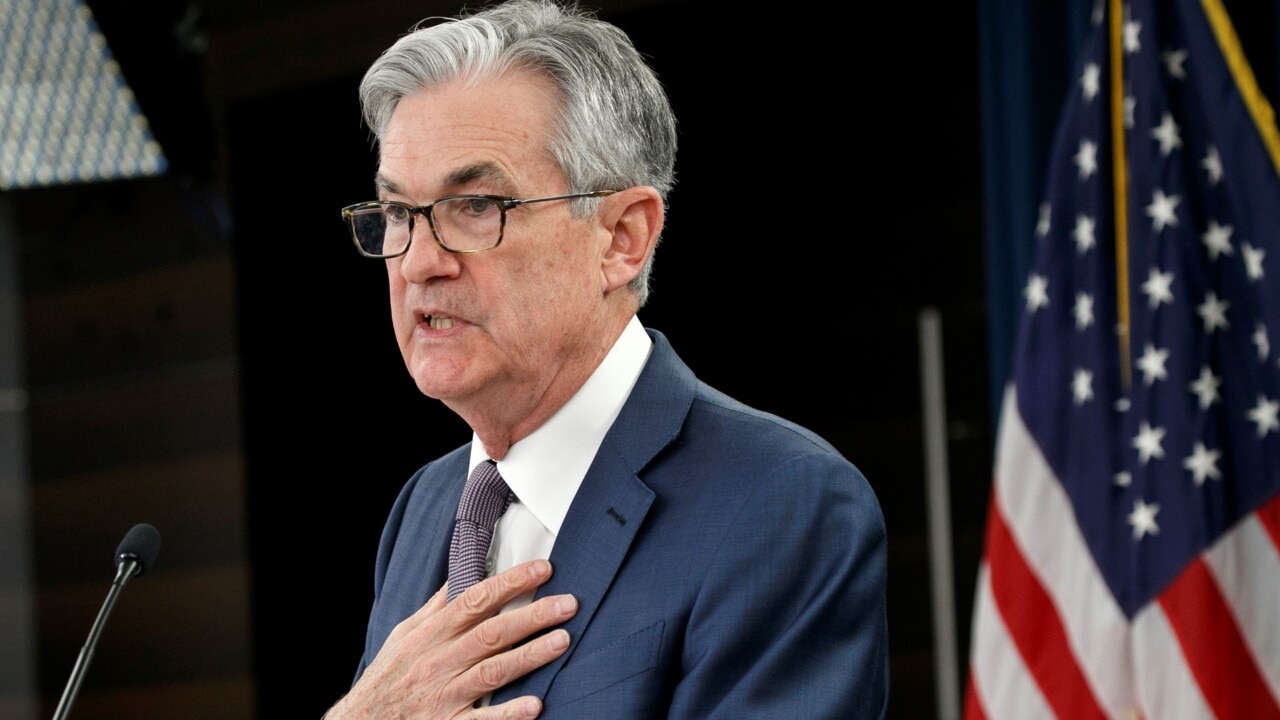Dovish pricing fuels expectations of Santa rally
The bar should be higher now but only the brave or foolhardy would bet against further gains at the most bullish time of year.

Business
Don't miss out on the headlines from Business. Followed categories will be added to My News.
In theory the bar should be much higher for equities after massive gains last month, but only the brave or foolhardy would bet against further gains at the most bullish time of year.
That’s particularly so this year as central banks in developed markets increasingly start to pivot away from rate hikes and recessions don’t appear imminent in the US and Australia.
The Reserve Bank is widely expected to keep a mild “tightening bias” on Tuesday but decide against another hike as it awaits confirmation that inflation will take too long to return to its target without some further policy tightening as assumed in its forecasts last month.
Stocks may be briefly held in check by portfolio hedging after the S&P 500 rose 12 per cent in five weeks, hitting a 20-month high close of 4594.63 on Friday. Put protection is cheap now as the VIX volatility index hits four-year lows around 12.45 per cent. A strong US non-farm payrolls report this Friday would also complicate matters.
But if US bond yields consolidate after dropping sharply last month, the stage may be set for a strong Santa rally. Because of the downward pressure on US rates, the Santa rally also includes non-US dollar currencies – the Aussie dollar hit a four-month high of US66.88c on Monday and gold hit a record $US2135 per ounce, breaking above previous peaks around $US, 085.
On Friday, Fed chair Jerome Powell said the Fed funds rate was “well into restrictive territory” suggesting he isn’t too concerned by dovish market pricing for no more hikes and rate cuts next year.
Powell did say it would be “premature to conclude with confidence that we have achieved a sufficiently restrictive stance” and the Fed was “prepared to tighten policy further if it becomes appropriate to do so”, but it was far from an emphatic pushback on market pricing of rate cuts.
Having successfully engineered a much-needed top in the US 10-year bond yield at 5 per cent with their comments early last month that rising bond yields were doing the job for them, Fed officials probably won’t push back too hard against dovish market pricing at this point.
Powell has a better read on the economy and markets since his ill-timed comment of October 2018 that the Fed is “a long way” from “neutral”. The Fed was forced into an embarrassing backflip that year after the S&P 500 briefly entered a bear market in December.

“Rarely, if ever, has a central bank executed such an exquisitely timed pivot,” said IG market analyst Tony Sycamore, who correctly said on October 11 that the unfolding geopolitical tensions in the Middle East “seems to have served as the catalyst for a much-anticipated dovish pivot” by the Fed.
That was fortuitously backed up by lower than expected US inflation data and slightly weaker than expected economic activity data which together point to the elusive “soft landing” for the US as the Fed may be in a position to cut rates without needing to see the US go into a recession.
The fact that Powell didn’t seriously push back against dovish market pricing after the biggest month-on-month easing of US financial conditions in at least four decades was telling.
Last month’s rally in bonds, equities and narrowing of credit spreads has worked against the Fed’s aim of slowing the economy to bring inflation back to its 2 per cent target. But economic data in the past month suggest there’s less need for financial conditions to stay tight.
In Australia, while there is still a risk of another RBA hike in February, market movements last month suggest investors are “positioning as if the RBA is done,” according to Macquarie Equities.
ResMed, CSL, Coles, Endeavour, Northern Star, Newmont, Orora, NextDC, Telstra, The Lottery Corp, and Transurban are a “good basket of stocks to own as the market now thinks the RBA has ended its rate hiking campaign”, said Macquarie’s Australian equities strategist, Matthew Brooks.
REA, Nine Entertainment, JB Hi-Fi, Scentre, Vicinity, Stockland, Region and Lendlease tend to underperform in the year after an RBA pause and are rated neutral or underperform by Macquarie. “After 13 hikes, there is again a growing expectation the RBA is done hiking,” Brooks says.
“The Fed’s last hike was in July, and except for Australia, the last hike in the developed world was in September. These pauses suggest central banks increasingly see the risks shifting from high inflation to slowing growth as they wait to see the lagged impact of past hikes.
“While there is still a risk of another RBA hike in February, market movements last month suggest investors are positioning as if the RBA is done.”
He says bond yields typically fall after a pause, which drives outperformance of bonds over stocks.
Whether a soft landing or a US recession, the slowing economic growth that drives central banks to pause and later cut rates also tends to drive the expectation of earnings downgrades and the outperformance of defensives over cyclicals. Health, consumer staples and gold miners have tended to outperform after an RBA pause when there was a US recession, with earnings growth the driver of outperformance.
More Coverage
Originally published as Dovish pricing fuels expectations of Santa rally





